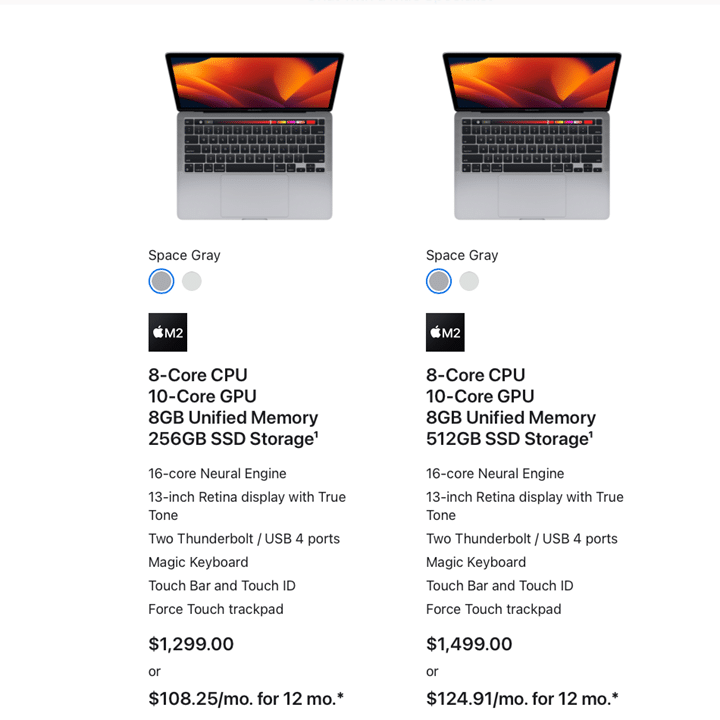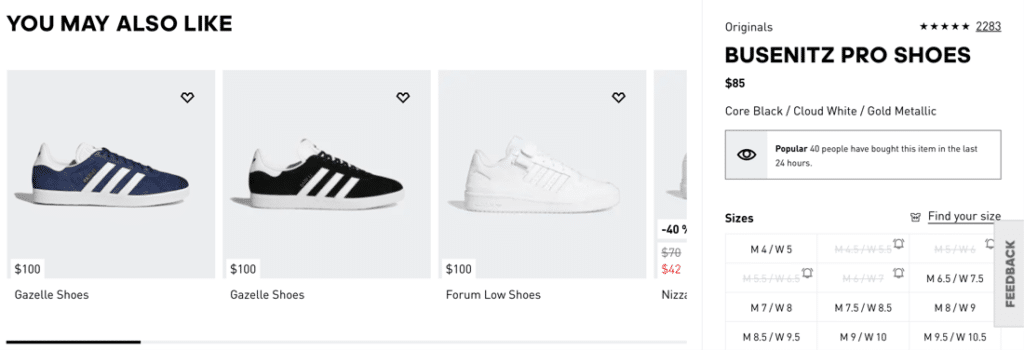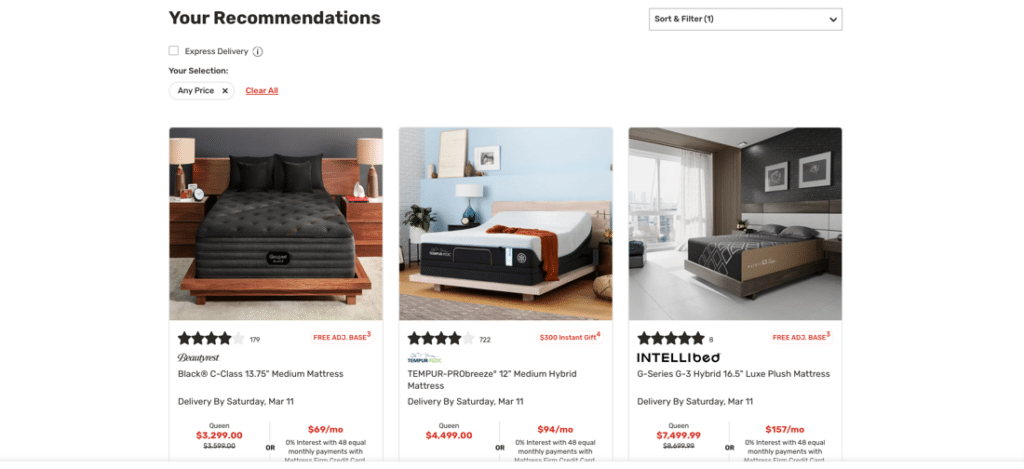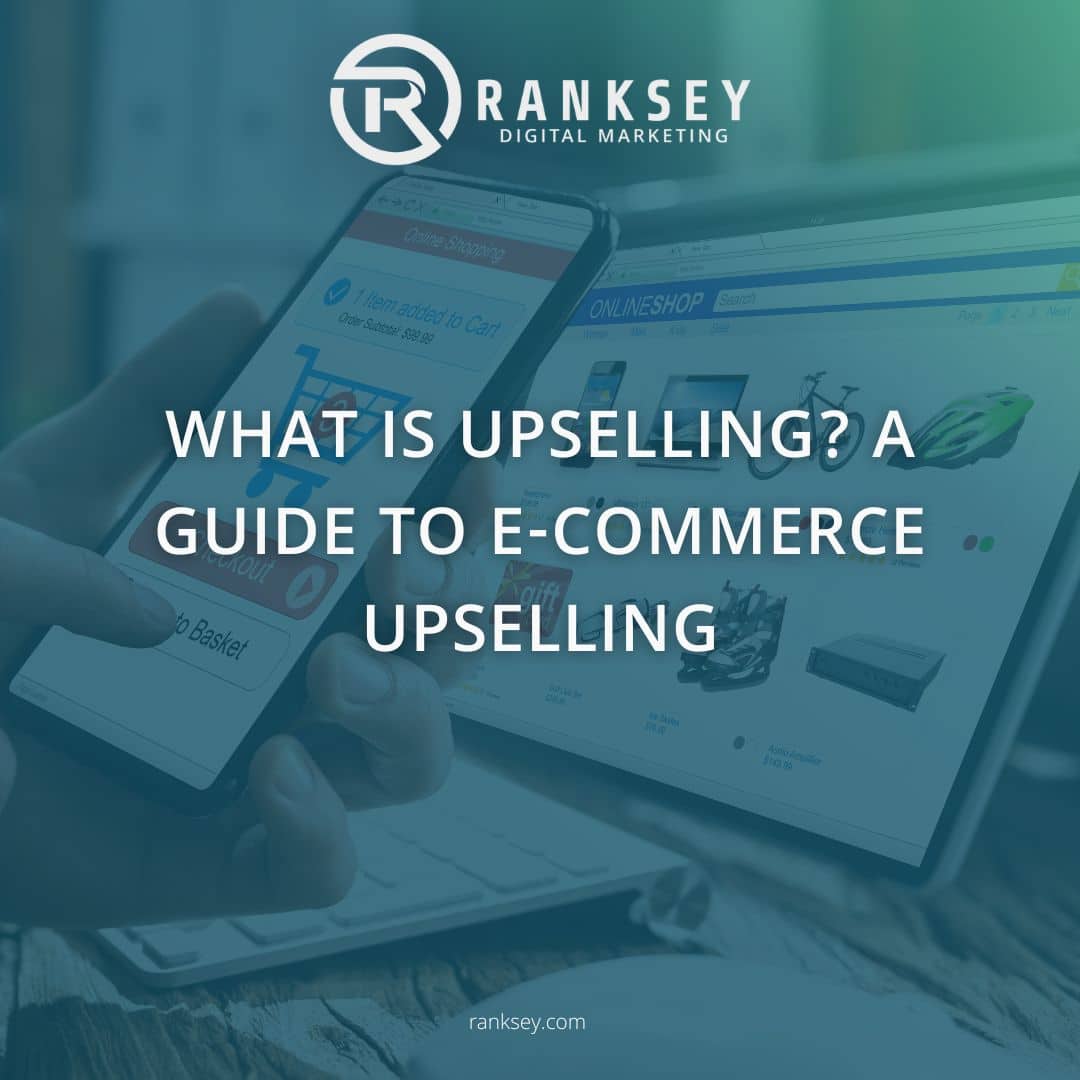Upselling is an essential strategy that e-commerce businesses must know to increase customer lifetime value, generate more transactions, and boost profits. If your e-commerce business is new to upselling and how to incorporate this practice into your sales strategies, this comprehensive guide is for you.
In this post, we’ll explain what upselling is, why it’s crucial for e-commerce brands, and how to implement it into your online store to maximize customer satisfaction and revenue.
What is upselling?
Upselling is a sales and marketing tactic used to persuade consumers to buy higher-value products, upgrade their original purchase, and spend more with your store.
Upselling Examples
Here are a few examples to help you better understand what upselling is:
- You go to a car dealership to look at a new car and you look at a base model sedan. The salesman tries to get you to upgrade from the base-model and spend more on extra features.
- You go online to buy a 1lb bag of dog food, but you are prompted to buy the 2lb bag at a cheaper price per pound.
- You go to buy a luxury watch, and the watch band for the model you want comes in either steel or gold. You start looking at the steel band, but the salesman pushes you to go for the gold one.
Ways to Upsell in E-Commerce
For upselling to be effective, it has to be done at the right time. It’s generally best to create your product pages around upselling your customers by implementing some of the upselling strategies mentioned below. However, sometimes it can also be done at checkout. What works best just depends on your brand, and to get the best results you’ll need to test different methods.
When you upsell, you naturally increase your Average Order Value, which is great. But, more importantly, you’re adding value for the customer. When you add value to your customers and make them happier, they’re more likely to buy again from you and even share your brand with others.
Cross-Sell vs. Upsell: What’s the Difference?
Upselling and cross-selling are two different sales strategies that are often confused with each other. Although both selling strategies aim to increase customer spending, they use unique tactics. While upselling products encourages consumers to upgrade to a more expensive product, cross-selling encourages them to buy more products along with their purchase.
For example, when customers buy a new phone, the sales representative often tries to cross-sell a phone case, charger, and other phone accessories within the same purchase. In this situation, an upselling example would be when a customer wants to buy a cheaper or older phone version, and the sales representative tries to upsell them on the newest (and more expensive) phone version available.
Why Upselling is Essential for E-Commerce Brands
It may seem obvious why upselling products is important, but many e-commerce brands don’t know how to upsell effectively and how it benefits their bottom line. When you implement small upselling strategies with many customers, these subtle sale increases can generate more profits and your revenue significantly.
Here are some benefits of using an e-commerce upselling strategy for your online store:
- Average customer lifetime value (CLV) increases — lowers customer acquisition costs, strengthens customer retention, and promotes steady revenue growth
- Average order value (AOV) increases — builds profits and strengthens CLV
- Monthly revenue increases — supports online store success and the bottom line
When upselling products to customers, it can influence them to upgrade and spend more since it’s positioned to provide them with more value that’s worth the extra investment.
For example, if your online store’s average order value is $100 and you implement an upselling strategy to get customers to spend an additional $10 each, it can generate 10% more revenue for your store without acquiring new customers.
Learn how to increase CLV in e-commerce on Ranksey’s podcast, “E-Commerce Secrets to Scale”.
How to Upsell in E-Commerce
Now that you know what upselling is and why it’s essential to e-commerce, let’s take a look at some specific examples on how to upsell effectively.
Side-By-Side Product Pricing for Easy User Experience
One of the most effective upselling strategies is product pricing comparisons. A product listing that displays and compares prices of the same product with an upgraded version is a valuable upselling strategy. When e-commerce brands are transparent about product pricing, itemize what’s included, and include the benefits of each when comparing, it allows the customer to make a more informed decision and understand the value of your products better.
When embedding product pricing comparisons for your online store, clearly display the pricing differences and clarify the added benefits that customers will gain from upgrading. Upselling products that are upgraded options should be clear and not confusing for your customers to choose from.
Below is an e-commerce upselling example of a product pricing comparison from Apple:

The above image shows Apple’s MacBook Pro side-by-side product listings. Instead of displaying each MacBook Pro version on two different product pages, Apple consolidates them into one page to compare the pricing and benefits of each.
This upselling strategy is also a great example of a strong user experience (UX) because visitors don’t have to navigate between two product pages to learn more about the same product. Comparison product listings also strengthen UX by providing website visitors an easy online shopping experience to learn more about the upgraded options available seamlessly.
Weak user experience (UX) for online stores can lead to:
- Turning potential and returning customers away — if your website is too difficult to navigate or slow to load
- Decreased engagement — visitors leaving your website immediately
- Abandoned carts and checkouts — visitors not completing their purchase
- Decreased transactions — online stores losing revenue and profits
Upselling products through side-by-side comparison listings is easy and an effective way for your e-commerce store to provide a better user experience and increase what your customers spend with your brand.
Learn how to optimize your online store’s user experience on Ranksey’s podcast, “E-Commerce Secrets to Scale”.
Similar Product Listings for More Shopping Options
Another upselling strategy is displaying similar products that are priced higher on your website. If a customer browsing your online store sees a similar product section, they may come across a similar product or version they like more. Similar product listings also work for both upselling and cross-selling in e-commerce.
Below is an e-commerce upselling example of a similar product listing from Adidas:

The above image is a similar product listing of Adidas sneakers that costs $85. Adidas also displays similar sneakers products at higher prices, other styles, and colors. By offering their consumers a wider selection of similar sneaker products, it encourages more upselling and cross-selling opportunities at their online store due to the increased options available.
Recommended Product Listings for Personalized Shopping
Another effective upselling strategy in e-commerce is providing customers with a personalized shopping experience through recommended products. Online stores can offer customized shopping to customers with recommended product listings based on the products they’re looking at. When online stores display products based on shopping behavior provided through customer data, it provides more personalized upselling opportunities because it offers products based on their exact interests, challenges, and needs.
Depending on the type of products your e-commerce brand sells, an online questionnaire is a great way to gain insight into what customers like to recommend specific products based on their answers. Shopping personalization speaks to customers directly by recommending specific product solutions based on their individual and unique needs.
Below is an e-commerce upselling example of a recommended product listing from Mattress Matcher:

In the above image, Mattress Matcher displays a recommended product listing from customers filling out their questionnaire. These results also include upgraded options of their recommended products to promote more upselling.
Upgrade Your Upselling Strategy with Customer Value Optimization
Now that you know the answer to “What is upselling?” and how it impacts the bottom line for your online store, the next step is to implement or improve your current upselling strategies.
Customer value optimization (CVO) can upgrade your current e-commerce upselling strategy by maximizing the value of your existing customers. By increasing average order value (AOV) and getting more repeat orders, CVO can turn one-time buyers into lifetime customers — who are more likely to spend more because they trust your brand and are more cost-effective to upsell than new customers.
Learn how to strengthen your e-commerce upselling strategy through customer value optimization.
Upselling FAQ’s
Can you upsell for e-commerce?
Yes. There are a few different methods and approaches to upselling in an e-commerce setting.
How important is upselling?
Upselling can make a huge difference in revenue, especially if your brand has a high-volume store. With this huge boost in revenue being organic, the increase in revenue is more profitable.
What’s the difference between upselling and cross-selling?
Upselling is attempting to get customers to upgrade what they are purchasing, whether it’s a nicer model with more features, or just a higher quantity of what they’re already buying. Cross-selling is getting customers to add onto their purchase, offering them accessories or other products that they might want to also buy.



